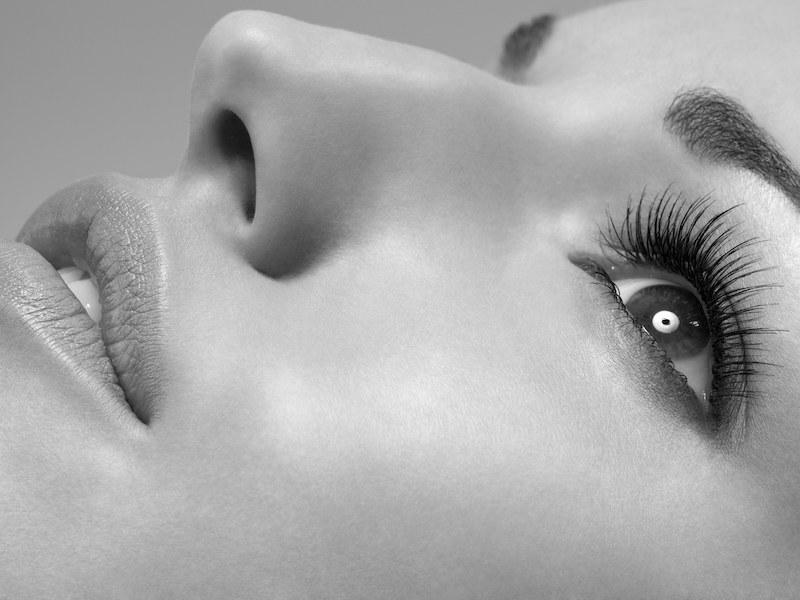
Poets have long waxed on about the merits of glistening eyes and kissable lips, but where’s the hubbub over our chins? While all that focus has been targeted on the peepers and the puckers, our chins have suffered in uncelebrated silence. But no more. Today, we celebrate the chin and take a look at what you can do when the chin you’re in is anything less than the chin you’d like to be in.
It’s no secret that a strong or weak chin can influence judgment on the strength of one’s character, leadership and attractiveness. And while certain dermal fillers can mimic a more contoured chin or jaw—they’re temporary and most doctors agree that they’re not a good substitute for a chin implant. No, if you’re really looking to permanently reshape your chin, a chin augmentation might just be your answer.
In fact, reshaping your chin via a cosmetic surgical procedure can not only improve your chin, it can also improve your jawline, make your neck more prominent and correct some facial asymmetry or deformities. That’s a lot of multi-tasking. And did we mention it can immeasurably improve your self-confidence, your experiences with FaceTime, and with taking a decent Selfie? #importantstuff So let’s spend the next 800 words or so and look at the basics of what a chin implant procedure might entail.
But first, what is chin augmentation?
Chin augmentation involves either reshaping the bone of the chin or surgically inserting an artificial implant under the skin to reconstruct, rejuvenate or augment the contour of your chin and jaw—sometimes both. Just think a padded bra… but for your chin… and surgically placed under your skin. So actually, it’s nothing like a padded bra at all. Stop thinking that. Let’s move on.
Chin implants used in chin augmentations are typically made of solid silicone (silastic), gortex or medpor and come in many styles and sizes to suit a variety of different faces and desired results. Men and women typically choose an implant that will enhance the general symmetry of the face—and this is important, cause facial implants are essentially permanent. Choose wisely. With the help of your surgeon, you’ll discuss which implant will best serve you and achieve the best result. Which brings us to…
Your consultation.
Like all cosmetic surgical procedures, considering chin augmentation requires that you having a sit-down with a board-certified plastic surgeon—prepare to do a lot of over-sharing. You’ll discuss the reasons why you want to change the shape of your chin or jaw in the first place, as well as your expectations, lifestyle and medical history. You’ll also discuss the pros and cons of the given procedure, and what recovery from a chin augmentation surgery might look like. 5 little recovery words will likely weasel their way into this conversation: downtime, bruising, redness, swelling and pain—make sure you’re paying attention.
Your surgeon may show you before and after pictures of other procedures, and may order X-rays of your face and jaw/chin to ascertain your individual facial structure and your bite. They’ll use all of this information to determine whether or not you’re a good candidate for chin augmentation surgery.
The procedure.
The procedure itself is typically done under general anesthesia with an additional local anesthetic injected into the area for added numbing power. An incision is then made on either the inside of the mouth or outside under the chin, creating a pocket to either access the bone or insert the implant in front of the chin bone and under the muscle. Once the implant is in place, it’s secured to the bone with sutures or screws, and then the opening is stitched up to heal. Easy, right?!
Slow down. Some procedures may entail more than a simple implant to round out the chin. In fact, others may require moving the bone as well, in which case your surgeon will make a cut inside your mouth along the lower gum to provide access to the chin bone and then another cut through the jaw bone using a bone saw or chisel. The jaw bone might then be moved and wired or screwed into place to ensure the best results.
But all this talk of bone saws, wires and chisels is getting a little gruesome, no? Let’s move forward to a less graphic reality of any surgical procedure—recovery.
Recovery.
After a short observation period, you’ll likely be able to go home the same day as your chin procedure. We know we’ve hit this pretty hard in previous blogs, but you must follow each and every post-surgical instruction that your surgeon provides you with. If your surgeon prescribes antibiotics—you take ‘em. If your surgeon tells you to follow a restricted diet—you do it. You’ll probably be wearing a compression garment and surgical dressing on your face—you need to wear it as long as your surgeon tells you to. You can expect swelling and bruising, though both should dissipate enough for you to return to normal activities (within reason) within a week, and should be completely gone in 4 to 6 weeks post-surgery. Along with the risk of infection are other abnormalities associated with the implant shifting or become dislodged and possible damage to nerves and musculature. Your surgeon will tell you which symptoms to be wary of. You may also feel some numbness in the chin area for up to 3 months—so, you know, you’ll want to stock up on napkins, ‘cause when errant sauce hits the chin, you won’t feel it.
And finally? Sweet, sweet results. Forget your eyes and lips, you’ll now want to verbally espouse the merits of your chin—beautifully sculpted, symmetrical to your other features, practically perfect in every way.
So there you have it. If you don’t like the chin your in, you can do something about it. Take a look at our Find A Surgeon tool to schedule a one-on-one consultation with one of our members, and you can decide if a chin augmentation or chin implant is right for you.






